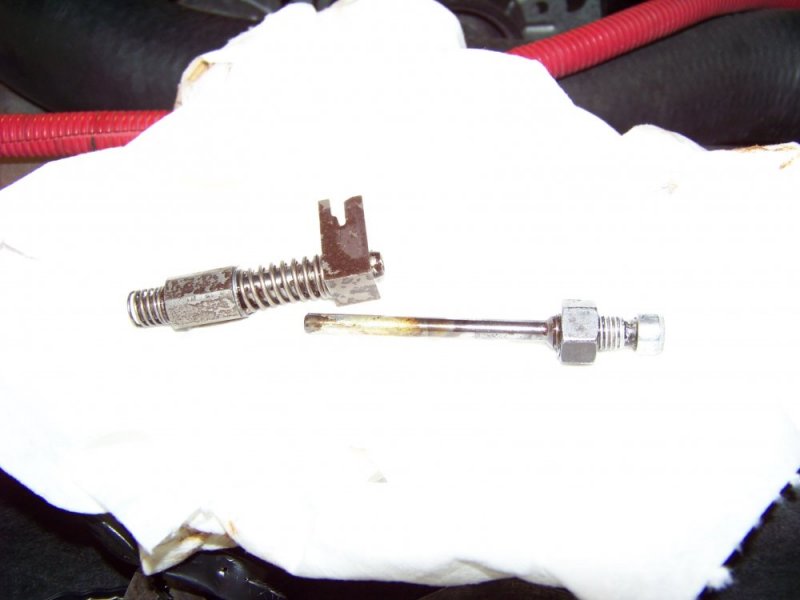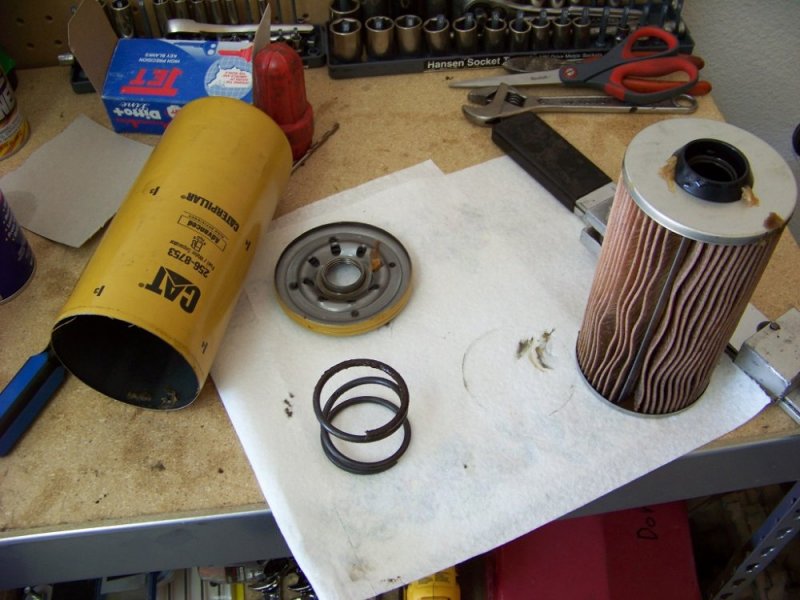EDIT UPDATE 4/11/17:
I no longer recommend burning as much of the corrosive wet fuel as you can due to further Injection System damage let alone clogged filter cost. Dispose of the "What used to be fuel" away as waste oil depending on local disposal laws.
ULSD is more prone to infection of bacteria and fungus than the old diesel of the past.
Biodiesel appears to allow this stuff to grow even faster.
After the Water In Fuel light went on I pulled fuel from the FFM into a glass jar. It had some water in the bottom. 2 days later it had white 1" strings of white cr@p growing off the water to fuel interface. The Walbro pump screen was plugged with snot and the main filter was nasty smelling.
I burned off as much fuel as possible. Then dropped the tank, sucked the remaining water and fuel out and then used a long pole with a washcloth zip tied on the end as a giant q-tip to swab down the tank. Steam cleaning is preferred. Then you need to clean the lines up to the first filter. The fuel pickup tube in the tank can have a good build up of the bug slime. This is round 3 with this stuff so a tank sock will just cause you trouble and make draining the tank harder in the future should the bugs come back.
Biocide added to the fuel will kill the bugs. They then clump and coat the tank bottom making you reach for a new fuel filter. Disposing of 34 gal of fuel may be cheaper than filters. I tossed 7 gal from the above issue and 2 filters. You put the biocide in after burning as much fuel as possible as quickly as possible as they can double their numbers in 20 min! You then drop the tank to clean it, change filters and clean out the FFM. Biocide in the FFM and tank before new fuel. Run the biocide through the transfer pump you used to clean out the tank as it is infected now too.
Note: the bugs usually ruin the fuel level sensors so replace them while you are there and forget about putting a tank sock on again! You will need a strainer before the lift pump that is easy to change around 40 micron max particle size. LeroyDiesel.com has fuel level sensors that do not get ruined by the bugs, build up, and acids present in contaminated fuel. Seriously his sensor has outlived a Walbro under this abuse.
More info on biocide and the problem:
http://sail-delmarva.blogspot.com/p/diesel-biocides.html
I no longer recommend burning as much of the corrosive wet fuel as you can due to further Injection System damage let alone clogged filter cost. Dispose of the "What used to be fuel" away as waste oil depending on local disposal laws.
ULSD is more prone to infection of bacteria and fungus than the old diesel of the past.
Biodiesel appears to allow this stuff to grow even faster.
After the Water In Fuel light went on I pulled fuel from the FFM into a glass jar. It had some water in the bottom. 2 days later it had white 1" strings of white cr@p growing off the water to fuel interface. The Walbro pump screen was plugged with snot and the main filter was nasty smelling.
I burned off as much fuel as possible. Then dropped the tank, sucked the remaining water and fuel out and then used a long pole with a washcloth zip tied on the end as a giant q-tip to swab down the tank. Steam cleaning is preferred. Then you need to clean the lines up to the first filter. The fuel pickup tube in the tank can have a good build up of the bug slime. This is round 3 with this stuff so a tank sock will just cause you trouble and make draining the tank harder in the future should the bugs come back.
Biocide added to the fuel will kill the bugs. They then clump and coat the tank bottom making you reach for a new fuel filter. Disposing of 34 gal of fuel may be cheaper than filters. I tossed 7 gal from the above issue and 2 filters. You put the biocide in after burning as much fuel as possible as quickly as possible as they can double their numbers in 20 min! You then drop the tank to clean it, change filters and clean out the FFM. Biocide in the FFM and tank before new fuel. Run the biocide through the transfer pump you used to clean out the tank as it is infected now too.
Note: the bugs usually ruin the fuel level sensors so replace them while you are there and forget about putting a tank sock on again! You will need a strainer before the lift pump that is easy to change around 40 micron max particle size. LeroyDiesel.com has fuel level sensors that do not get ruined by the bugs, build up, and acids present in contaminated fuel. Seriously his sensor has outlived a Walbro under this abuse.
More info on biocide and the problem:
http://sail-delmarva.blogspot.com/p/diesel-biocides.html
Last edited by a moderator:







